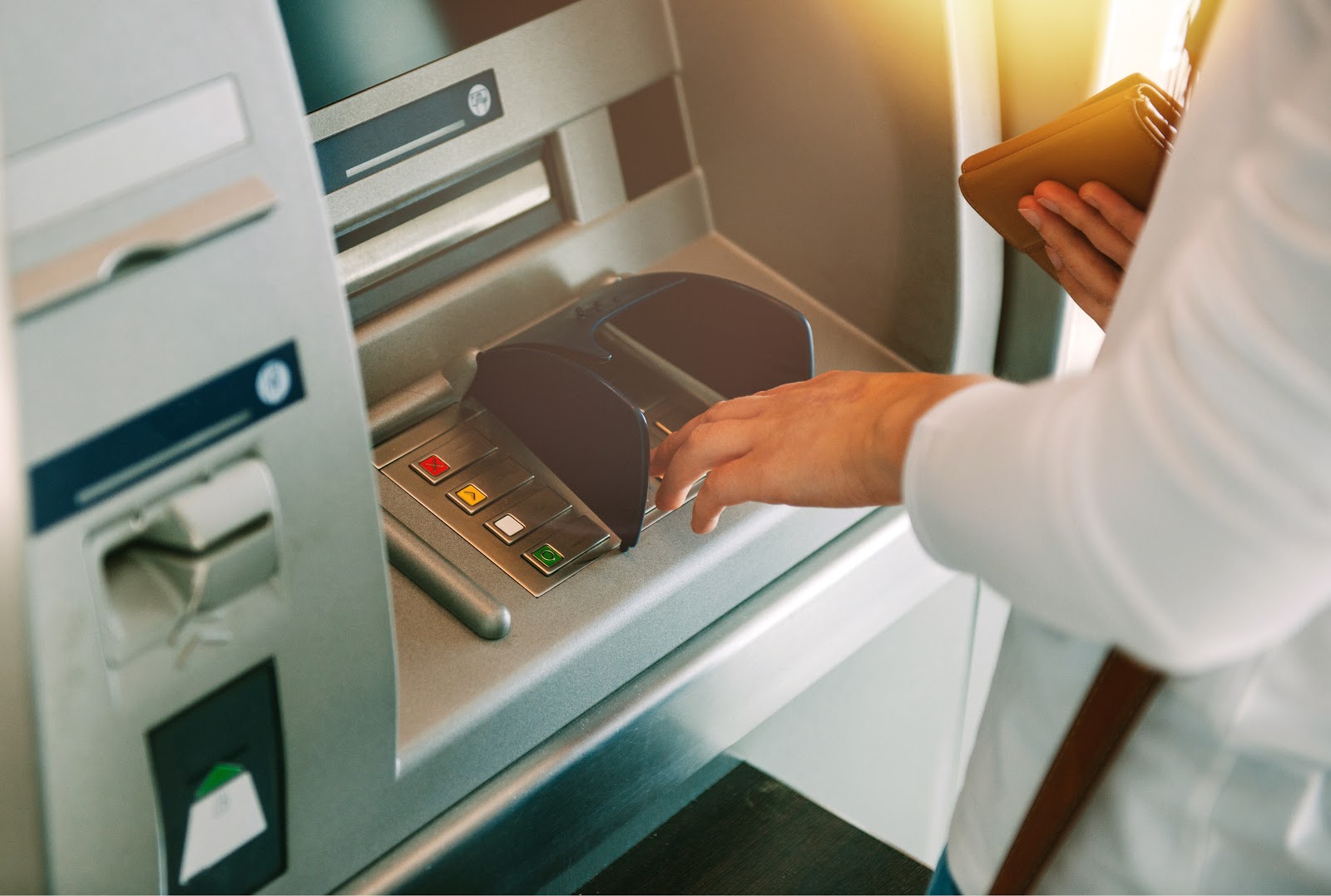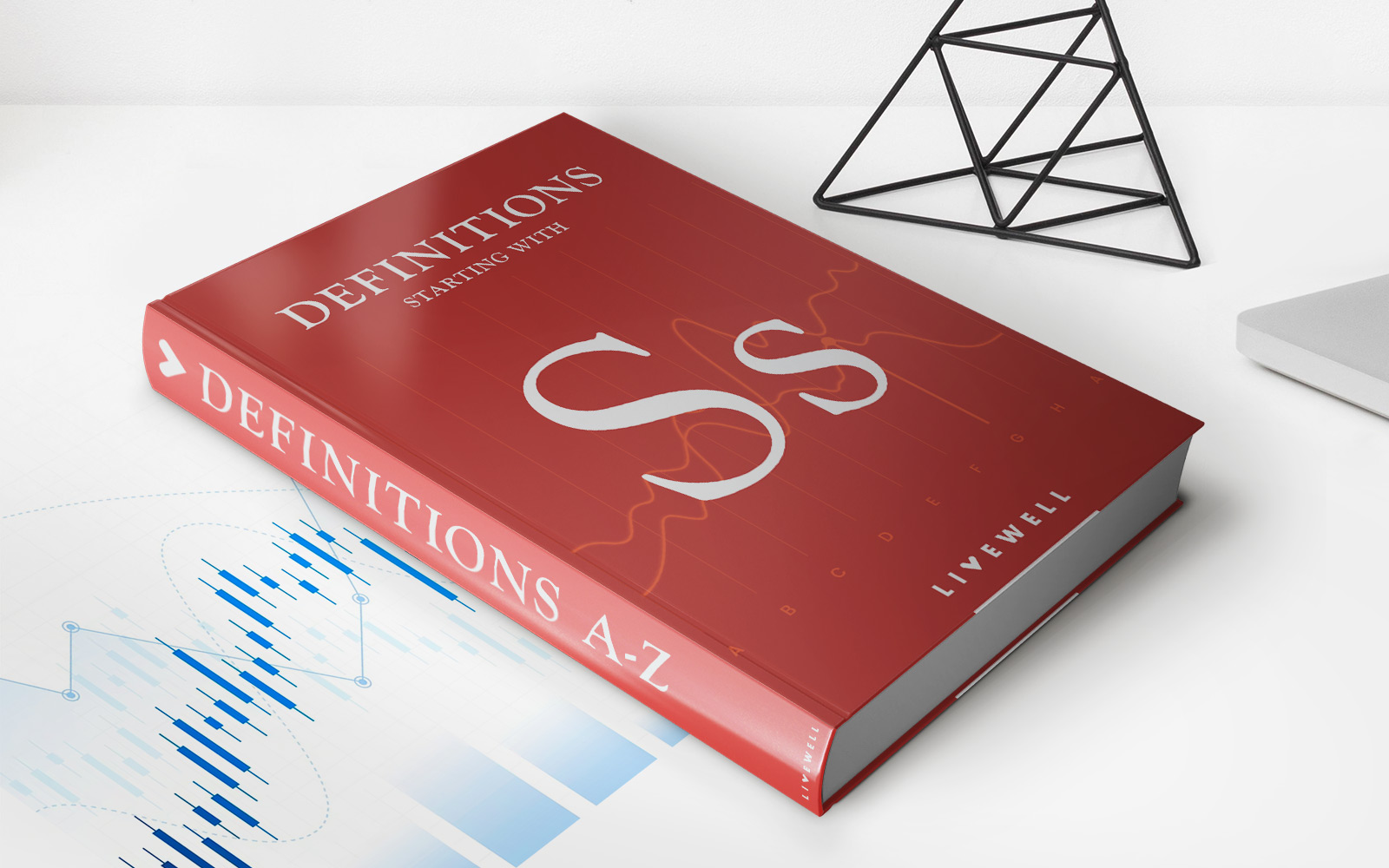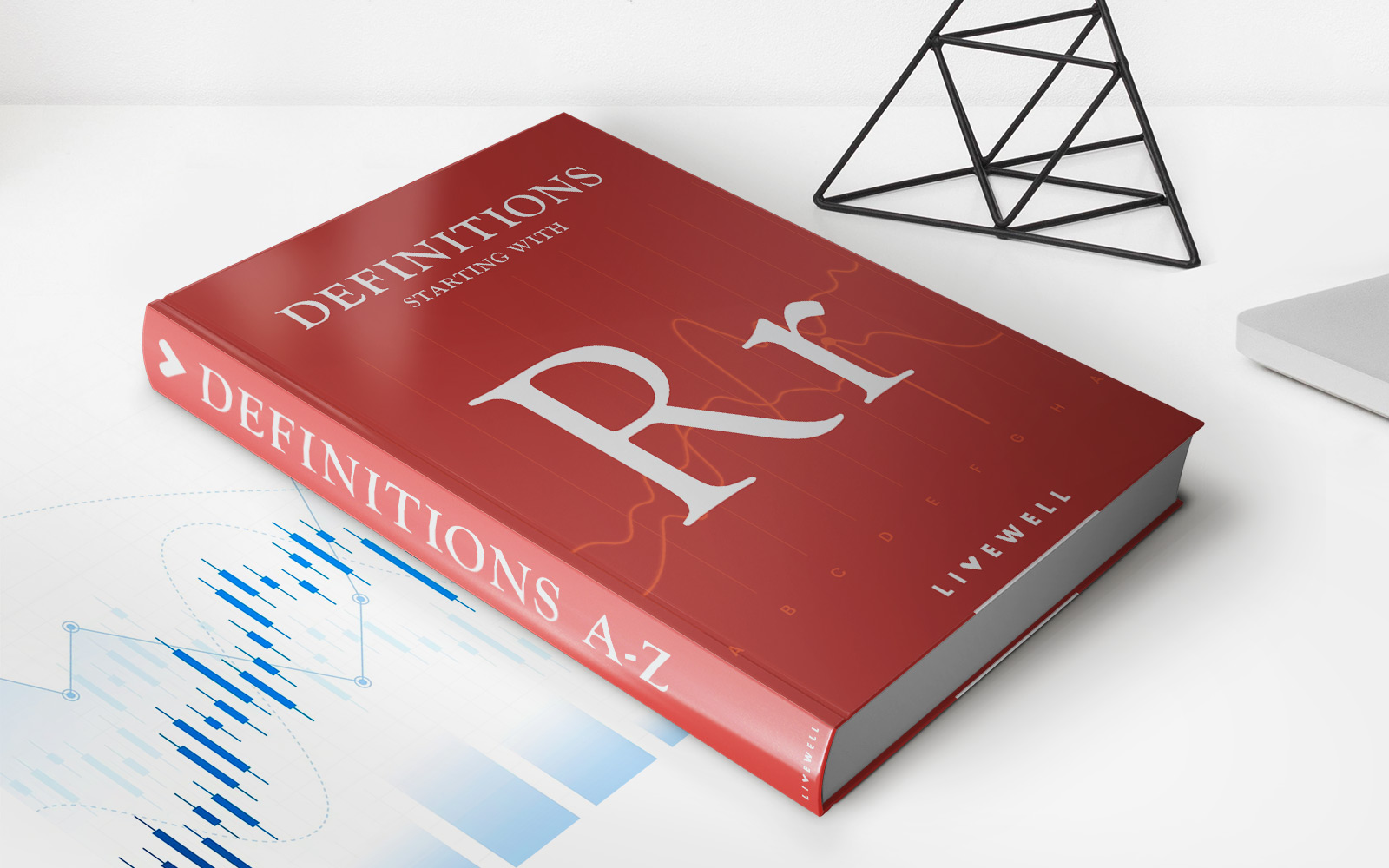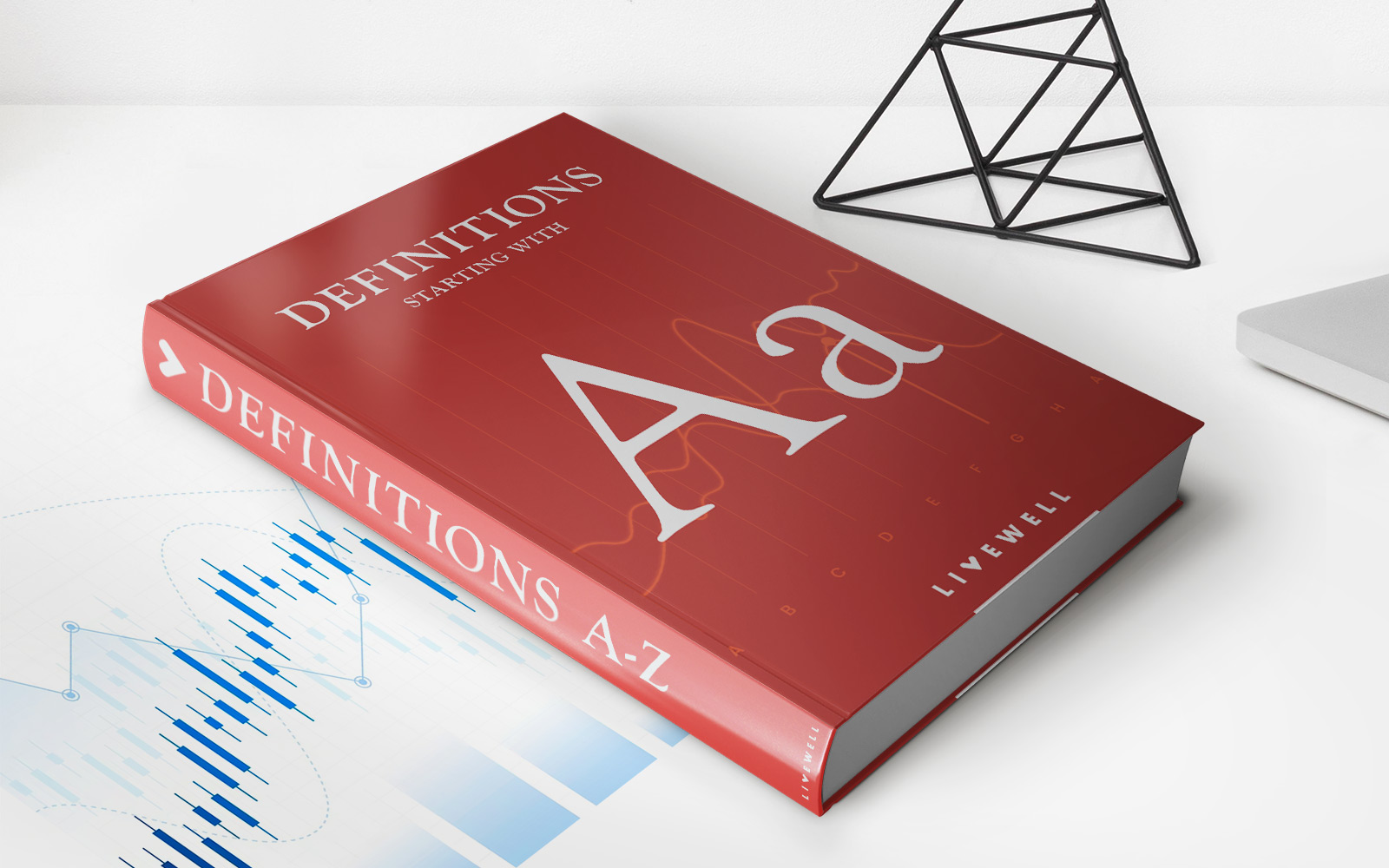

Finance
What Is Secured Line Of Credit
Published: January 6, 2024
Learn about secured line of credit in finance and how it can provide you with flexible access to funds, backed by collateral, to meet your financial needs.
(Many of the links in this article redirect to a specific reviewed product. Your purchase of these products through affiliate links helps to generate commission for LiveWell, at no extra cost. Learn more)
Table of Contents
- Introduction
- Definition of a Secured Line of Credit
- How Does a Secured Line of Credit Work?
- Benefits of a Secured Line of Credit
- Drawbacks of a Secured Line of Credit
- Understanding Collateral in a Secured Line of Credit
- Qualifying for a Secured Line of Credit
- Comparison Between Secured and Unsecured Lines of Credit
- Factors to Consider Before Applying for a Secured Line of Credit
- Tips for Using a Secured Line of Credit Wisely
- Conclusion
Introduction
When it comes to financing options, securing a line of credit can offer flexibility and convenience for personal or business needs. A secured line of credit is a type of loan that is backed by collateral, providing a sense of security to the lender. Unlike an unsecured line of credit, which is based solely on a borrower’s creditworthiness, a secured line of credit offers additional advantages by requiring the borrower to pledge assets as collateral.
In this article, we will delve into the world of secured lines of credit to help you understand what they are, how they work, and the benefits and drawbacks they bring. Whether you are considering financing a major purchase, consolidating debt, or funding a business venture, this comprehensive guide will equip you with the vital knowledge necessary to make an informed decision.
So, if you’re ready to learn more about secured lines of credit and how they can empower you financially, let’s dive in.
Definition of a Secured Line of Credit
A secured line of credit is a form of financing that allows borrowers to access funds up to a predetermined limit. What distinguishes a secured line of credit from an unsecured line of credit is the requirement of providing collateral as security against the loan. Collateral can be any valuable asset, such as real estate, vehicles, or investment portfolios, that the borrower pledges to the lender in case of default.
With a secured line of credit, the borrower can access funds as needed, up to the approved credit limit, and repay the borrowed amount over time. Similar to a credit card, the borrower only pays interest on the amount they have borrowed, rather than on the total credit limit.
Secured lines of credit typically have lower interest rates compared to unsecured lines of credit due to the reduced risk for the lender. Lenders are more comfortable extending credit when they have collateral to fall back on in the event of default. However, it is important to note that not repaying the borrowed amount can result in the loss of the pledged collateral.
Overall, a secured line of credit offers a flexible and accessible financing option for individuals and businesses. By providing collateral, borrowers can demonstrate their commitment to repaying the loan, increasing their chances of approval and receiving favorable terms.
How Does a Secured Line of Credit Work?
Understanding how a secured line of credit works is essential before utilizing this financing option. Here’s a step-by-step breakdown of how it operates:
- Application and Approval: The borrower applies for a secured line of credit with a financial institution, providing necessary documentation such as proof of income, credit history, and details of the collateral being pledged. The lender evaluates the application and determines if the borrower meets their criteria for approval.
- Establishing the Credit Limit: Once approved, the lender sets a credit limit for the secured line of credit. This limit represents the maximum amount the borrower can borrow from the available funds. The credit limit is based on various factors, including the value of the collateral provided and the borrower’s financial profile.
- Accessing Funds: With a secured line of credit, borrowers have the flexibility to access funds as needed, up to the predetermined credit limit. They can withdraw funds through various methods, such as writing checks or transferring funds electronically. The interest only accumulates on the borrowed amount.
- Repayment Terms: A secured line of credit typically requires monthly minimum payments. These payments consist of both principal and interest. The minimum payment is typically a percentage of the outstanding balance, but borrowers can choose to repay more than the minimum to reduce interest charges and pay off the debt faster.
- Variable Interest Rates: Secured lines of credit often have variable interest rates, which means that the interest rate can change over time based on market conditions. It’s essential for borrowers to review the terms and conditions to understand how interest rates can fluctuate and how it can impact their monthly payments.
- Collateral Protection: As mentioned earlier, a secured line of credit requires collateral as security. If the borrower fails to make timely payments or defaults on the line of credit, the lender may seize the collateral to recoup their losses. It is crucial to carefully consider the collateral pledged and ensure the ability to make timely payments.
By understanding how a secured line of credit operates, borrowers can make informed decisions when using this financing option. It offers flexibility in accessing funds and allows for repayment over time, providing a convenient solution for various financial needs.
Benefits of a Secured Line of Credit
A secured line of credit offers several advantages for borrowers. Here are some key benefits:
- Lower Interest Rates: Secured lines of credit generally carry lower interest rates compared to unsecured loans or credit cards. The presence of collateral reduces the lender’s risk, resulting in more favorable interest rates for borrowers. This allows borrowers to save money on interest costs over the life of the loan.
- Flexible Access to Funds: With a secured line of credit, borrowers have access to a revolving pool of funds that can be used as needed. Whether it’s for unforeseen expenses, home renovations, or business investments, borrowers can withdraw funds up to the approved credit limit, providing flexibility and peace of mind.
- Credit Building Opportunity: Using a secured line of credit responsibly can help borrowers build or improve their credit history. Making timely payments and demonstrating responsible credit management can have a positive impact on credit scores. This can open doors to better financing options and lower interest rates in the future.
- Potential for Higher Credit Limits: As borrowers make regular payments and exhibit responsible credit behavior, lenders may increase the credit limit on a secured line of credit. This can provide access to more funds, allowing borrowers to tackle larger projects or investment opportunities.
- Ability to Consolidate Debt: A secured line of credit can be a useful tool for debt consolidation. Borrowers can use the funds to pay off higher-interest debts, such as credit cards or personal loans, and then focus on repaying the lower-interest line of credit. This can simplify repayment and potentially save money on interest charges.
It’s important to note that benefits may vary depending on individual circumstances and the specific terms and conditions of the secured line of credit. Consulting with a financial advisor can help assess whether a secured line of credit is the right fit and provide guidance on maximizing its benefits.
Drawbacks of a Secured Line of Credit
While a secured line of credit offers several benefits, it’s essential to consider the potential drawbacks before deciding to utilize this financing option. Here are some key drawbacks to keep in mind:
- Risk of Collateral Loss: When pledging collateral for a secured line of credit, borrowers run the risk of losing the asset if they default on the loan. This can have significant implications, especially if the collateral has substantial value or holds sentimental significance.
- Higher Costs for Inadequate Collateral: The amount of credit extended and the interest rate offered is often tied to the value and quality of the collateral provided. If the collateral is deemed insufficient or less valuable, borrowers may receive a lower credit limit or face higher interest rates, resulting in increased borrowing costs.
- Interest Rate Risk: Unlike fixed-rate loans, secured lines of credit often come with variable interest rates. If interest rates rise, borrowers may face increased monthly payments, potentially making it difficult to manage the debt. It’s important for borrowers to understand how interest rate fluctuations could impact their repayment ability.
- Potential for Overborrowing: The accessibility and flexibility of a secured line of credit can lead to the temptation of borrowing more than necessary. Without proper financial discipline, borrowers may find themselves in a cycle of debt, struggling to repay the borrowed funds and accumulating interest charges.
- Dependency on Collateral Value: As the value of collateral may change over time, it can impact the credit limit and borrowing capacity. If the value of the collateral decreases significantly, lenders may restrict access to funds or require additional collateral to maintain the line of credit.
It’s crucial for borrowers to carefully evaluate their financial situation, risk tolerance, and ability to make timely payments before committing to a secured line of credit. Additionally, exploring alternative financing options and consulting with a financial advisor can help determine the most suitable route for individual borrowing needs.
Understanding Collateral in a Secured Line of Credit
In a secured line of credit, collateral plays a vital role in providing security for the lender. Collateral is an asset that the borrower pledges to the lender as a form of guarantee that the loan will be repaid. It serves as a safeguard in case of default, allowing the lender to seize and sell the collateral to recover their losses.
The most commonly pledged assets as collateral in a secured line of credit include real estate properties, vehicles, investment portfolios, or other valuable assets. The value of the collateral is evaluated by the lender to determine the credit limit and terms of the line of credit. The higher the value of the collateral, the more favorable terms borrowers may receive, such as a higher credit limit or lower interest rates.
It’s important to note that the type of collateral accepted may vary depending on the lender’s policies and the specific requirements of the secured line of credit. Lenders typically prefer assets that have a predictable value and can be easily liquidated in case of default.
When using collateral in a secured line of credit, borrowers should consider the following:
- Evaluation of Collateral Value: Lenders conduct a thorough assessment of the collateral’s value to determine its suitability and the maximum credit limit that can be extended. Borrowers should ensure they provide accurate and up-to-date information to ensure an accurate valuation.
- Impact on Borrowing Terms: The value and quality of the collateral can influence the borrowing terms and conditions. Higher-value collateral may result in more favorable terms, such as a higher credit limit or lower interest rates, while lower-value or riskier collateral may lead to reduced borrowing capacity or higher borrowing costs.
- Maintenance and Insurance: Borrowers are generally responsible for maintaining the collateral in good condition and ensuring adequate insurance coverage. This protects both the lender’s interest in the collateral and the borrower’s investment in the asset.
- Risk of Collateral Loss: Failing to repay the borrowed funds in a secured line of credit can result in the loss of the collateral. Borrowers should carefully assess their ability to make timely payments and understand the consequences of defaulting on the loan.
It is essential for borrowers to thoroughly understand the role of collateral in a secured line of credit and carefully consider the implications before utilizing this type of financing.
Qualifying for a Secured Line of Credit
Qualifying for a secured line of credit involves meeting certain criteria set by the lender. While specific requirements can vary among financial institutions, here are some common factors that lenders consider:
- Credit Score and History: Lenders assess the borrower’s creditworthiness by reviewing their credit score and credit history. A higher credit score, indicating a good repayment track record, can increase the chances of approval and secure more favorable terms.
- Collateral Value and Quality: The value and quality of the collateral provided play a significant role in determining eligibility for a secured line of credit. Lenders assess the collateral’s market value, condition, and potential for resale in case of default.
- Income and Debt-to-Income Ratio: Lenders analyze the borrower’s income and debt levels to ensure they have the financial capacity to make loan repayments. A low debt-to-income ratio (DTI), which compares the borrower’s monthly debt payments to their monthly income, is typically preferred.
- Documentation: Borrowers are required to provide documentation to support their loan application, such as proof of income, identification, and documentation related to the collateral being pledged. These documents enable the lender to verify the borrower’s financial standing and collateral details.
- Employment Stability: Lenders often consider the borrower’s employment history and stability. A steady employment record demonstrates a regular source of income, indicating a higher likelihood of loan repayment.
- Ability to Repay: Lenders assess the borrower’s ability to repay the loan based on their income, expenses, and other financial obligations. They look for a consistent repayment capacity to minimize the risk of default.
It’s important to note that each lender may have specific requirements and evaluation criteria. Some lenders may be more lenient in certain areas while stricter in others. Additionally, borrowers should be prepared to provide any additional documentation or information requested by the lender during the application process.
By understanding the factors that lenders consider when evaluating applications for secured lines of credit, borrowers can better prepare themselves and increase their chances of qualifying for the loan.
Comparison Between Secured and Unsecured Lines of Credit
Secured and unsecured lines of credit are two distinct financing options with key differences. Understanding these differences can help borrowers determine which type of line of credit best suits their needs. Here’s a comparison between secured and unsecured lines of credit:
Collateral Requirement:
A secured line of credit requires collateral, such as real estate, vehicles, or investment portfolios, while an unsecured line of credit does not require any collateral. The presence of collateral in a secured line of credit provides security for the lender and often leads to more favorable terms for borrowers.
Interest Rates:
Secured lines of credit tend to have lower interest rates compared to unsecured lines of credit. The collateral reduces the lender’s risk, allowing them to offer more competitive interest rates to borrowers. Unsecured lines of credit typically have higher interest rates as they are not backed by collateral.
Borrowing Limits:
Secured lines of credit generally offer higher borrowing limits compared to unsecured lines of credit. The value of the collateral determines the credit limit for secured lines of credit, while unsecured lines of credit are typically based on the borrower’s creditworthiness and income.
Flexibility in Use:
Both secured and unsecured lines of credit provide borrowers with flexibility in using the funds. Borrowers can access and utilize the funds as needed, up to the approved credit limit. Whether it’s for home improvements, debt consolidation, or emergency expenses, both types of lines of credit offer flexibility in managing financial needs.
Risk of Collateral Loss:
The primary risk for secured lines of credit is the potential loss of collateral in the event of default. If borrowers fail to make timely payments, the lender can seize and sell the collateral to recover their losses. Unsecured lines of credit do not have collateral requirements, reducing the risk of collateral loss.
Qualification Requirements:
Secured lines of credit usually have more lenient qualification requirements compared to unsecured lines of credit. The collateral provided adds an extra layer of security for the lender, making it easier for borrowers to qualify for a secured line of credit even with a lower credit score or income level.
Ultimately, the choice between a secured and unsecured line of credit depends on individual circumstances, risk appetite, and financial goals. Borrowers should carefully evaluate their needs and consult with a financial advisor to determine the most suitable option.
Factors to Consider Before Applying for a Secured Line of Credit
Before applying for a secured line of credit, it’s important to consider several factors to ensure that this financing option aligns with your needs and financial goals. Here are some key factors to evaluate:
Repayment Ability:
Assess your ability to make regular, timely payments on the line of credit. Consider your income, expenses, and other financial obligations. Ensure that you have a solid plan for repayment to avoid defaulting on the loan and losing the collateral.
Collateral Evaluation:
Carefully evaluate the collateral you intend to pledge. Consider its value, market conditions, and potential risks. Remember that the collateral serves as security for the loan, and defaulting on the line of credit can result in the loss of the collateral.
Interest Rates and Terms:
Compare the interest rates, fees, and terms of multiple lenders to ensure you’re getting the most favorable deal. Evaluate how interest rates may fluctuate over time, as secured lines of credit often have variable interest rates. Consider the impact of potential rate changes on your monthly payments.
Borrowing Limit:
Understand the credit limit that will be offered on the secured line of credit and whether it aligns with your financing needs. Ensure that the credit limit is sufficient for your intended purposes and evaluate how it may change over time based on factors such as the performance of the collateral.
Financial Goals:
Determine how a secured line of credit fits into your long-term financial goals. Consider whether the borrowed funds will contribute to your overall financial well-being and align with your plans for personal or business growth.
Alternative Financing Options:
Explore alternative financing options beyond a secured line of credit. Compare it with other types of loans, such as unsecured lines of credit, personal loans, or home equity loans, to identify the option that best suits your needs and provides the most favorable terms.
By considering these factors before applying for a secured line of credit, you can make an informed decision that aligns with your financial situation, goals, and risk tolerance. Remember to consult with a financial advisor to evaluate your options and ensure the line of credit is the right choice for your specific circumstances.
Tips for Using a Secured Line of Credit Wisely
Using a secured line of credit wisely can help you make the most of this financing option while minimizing risks. Here are some tips to ensure responsible and smart utilization of a secured line of credit:
1. Assess Your Financial Situation:
Before utilizing a secured line of credit, assess your financial position. Consider your income, expenses, and debt obligations. Ensure that you have a clear understanding of your repayment capacity and that taking on additional debt is feasible within your budget.
2. Borrow Only What You Need:
Resist the temptation to borrow more than necessary. Only withdraw funds from your secured line of credit for essential expenses or investments that will contribute to your financial well-being. Overborrowing can lead to increased debt and interest charges.
3. Make Timely Payments:
Ensure that you make your monthly payments on time. Late or missed payments can not only result in late fees but also damage your credit score. Set up reminders or automatic payments to stay on track with your repayment schedule.
4. Monitor Your Credit Limit:
Keep track of your credit limit and ensure that you do not exceed it. Going over your limit can result in penalties and may negatively impact your credit score. Regularly review your outstanding balance to stay within your approved credit limit.
5. Be Mindful of Interest Rates:
Understand the interest rate on your secured line of credit and how it can impact your overall borrowing costs. Consider making additional payments towards the principal amount to reduce the interest charges over time.
6. Maintain and Protect Collateral:
Keep your collateral in good condition and ensure it is adequately insured. This protects both your investment and the lender’s interest. Regular maintenance and insurance coverage demonstrate your commitment to the secure repayment of the loan.
7. Review and Compare Offers:
Regularly review the terms and conditions of your secured line of credit. Periodically compare offers from different lenders to ensure you are still getting the most favorable rates and terms.
8. Monitor Your Credit:
Keep tabs on your credit report and credit score. Regularly monitoring your credit can help you identify any errors, potential fraud, or areas for improvement. Maintaining a good credit score can open doors to better financing options in the future.
By following these tips, you can use a secured line of credit responsibly and effectively manage your borrowing needs. Remember that responsible borrowing behavior not only helps you achieve your financial goals but also strengthens your overall financial health.
Conclusion
A secured line of credit can be a valuable financial tool for individuals and businesses alike. By understanding the ins and outs of this financing option, borrowers can make informed decisions when it comes to their financial needs.
Secured lines of credit offer several benefits, including lower interest rates, flexible access to funds, potential credit building opportunities, higher credit limits, and the ability to consolidate debt. However, it’s crucial to consider the drawbacks, such as the risk of collateral loss and potential fluctuations in interest rates.
Before applying for a secured line of credit, consider factors such as repayment ability, collateral evaluation, interest rates and terms, borrowing limits, financial goals, and alternative financing options. Taking these factors into account ensures that a secured line of credit aligns with your specific needs and contributes to your overall financial well-being.
Utilizing a secured line of credit wisely involves assessing your financial situation, borrowing only what you need, making timely payments, monitoring your credit limit, being mindful of interest rates, maintaining and protecting collateral, reviewing and comparing offers, and monitoring your credit. Following these tips can help you maximize the benefits of a secured line of credit while minimizing risks.
In conclusion, a secured line of credit can provide the flexibility and financial support necessary for various personal and business ventures. By understanding the intricacies, evaluating your needs, and using it responsibly, you can leverage this financing option to achieve your financial goals and enhance your overall financial stability.














